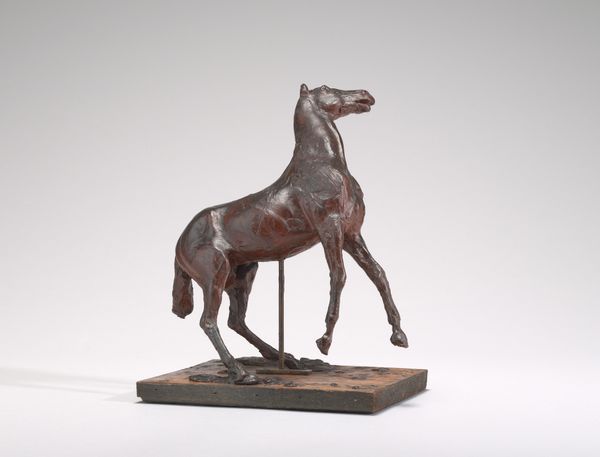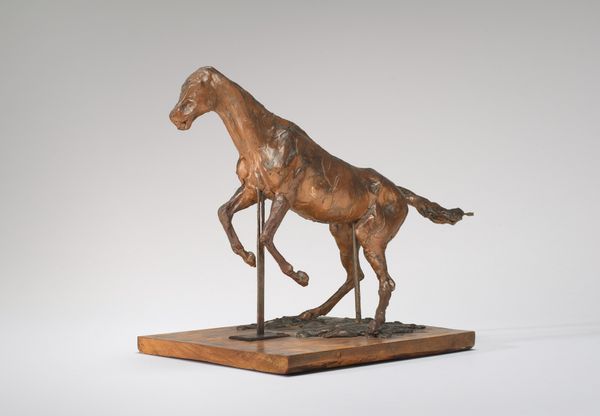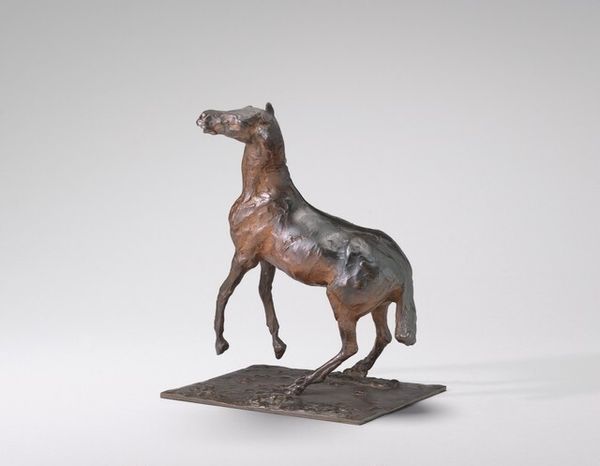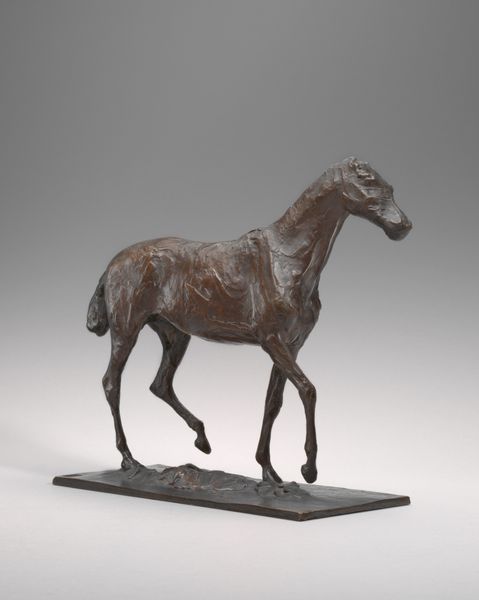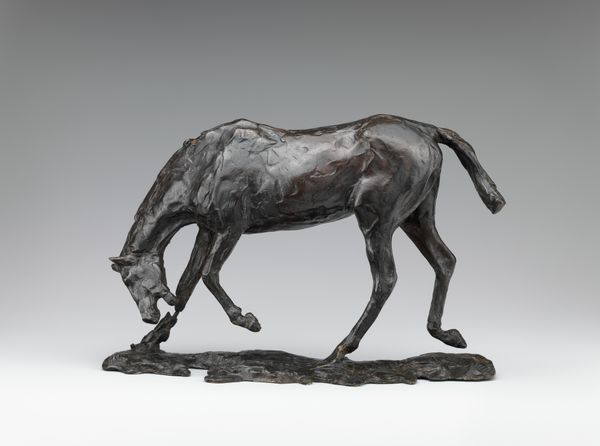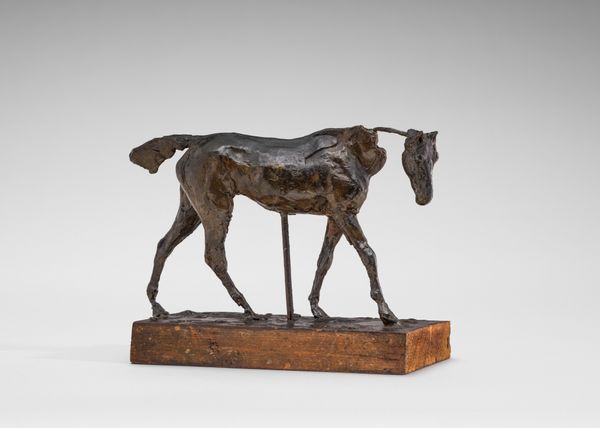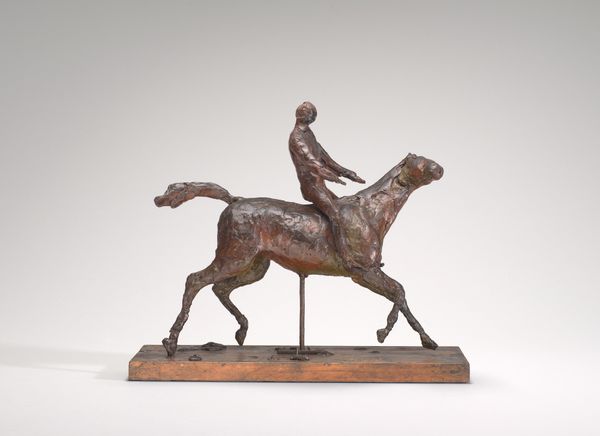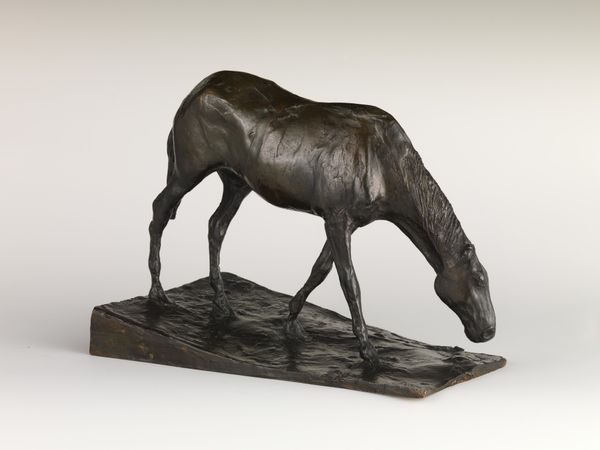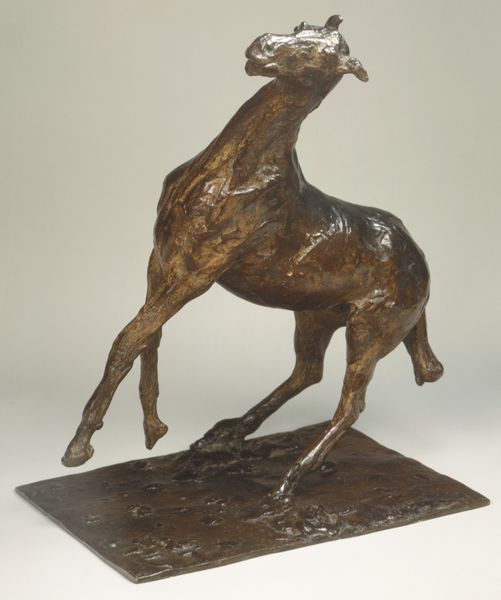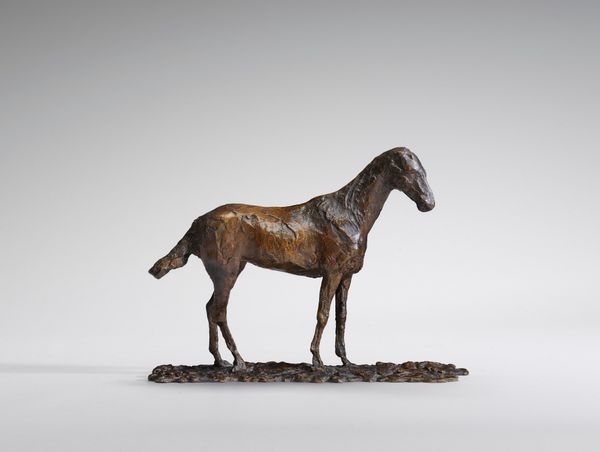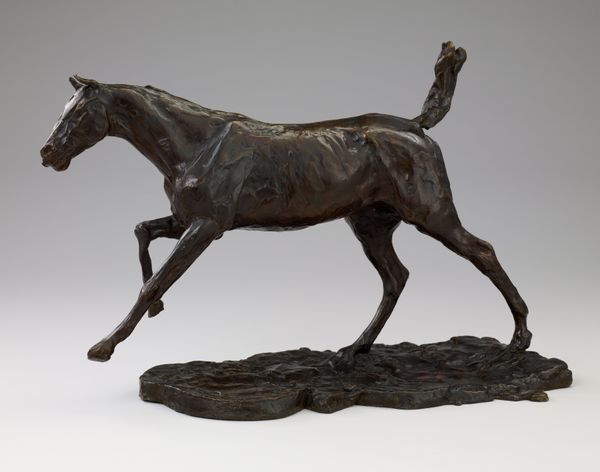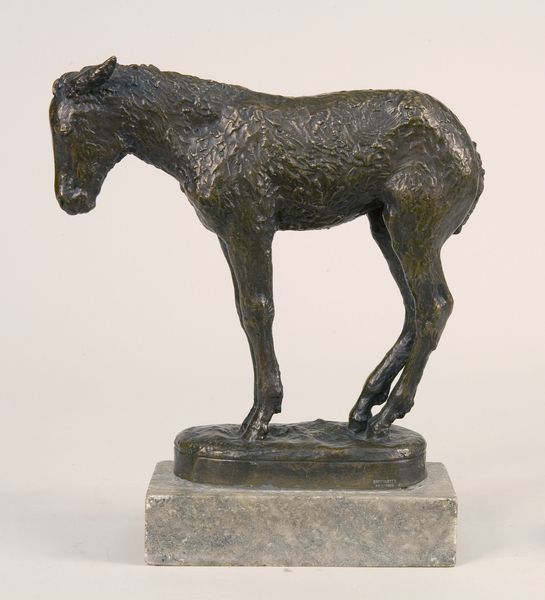
Dimensions: 22.5 x 12.7 cm
Copyright: Public Domain
Edgar Degas made this bronze sculpture of a horse, likely in France towards the end of the 19th century. At the time, the institutions of art were lagging behind the developments of science. Photography had captured the movements of animals in unprecedented detail, and this sculpture shows Degas engaging with this new visual information. But the sculpture isn't just a dry record of how a horse trots. Degas was interested in the spectacle of horse racing, a popular and fashionable activity that reflected the social hierarchies of the time. We can see his work as a comment on the social structures of his time. By combining artistic skill with scientific knowledge, Degas challenged conventional artistic norms and questioned the role of art in representing the world. Art historians use various resources, like letters, exhibition reviews, and scientific publications, to better understand the context in which art is made.
Comments
stadelmuseum almost 2 years ago
⋮
Depictions of horse racing constitute the focal point of Degas’ work. Around 1860, the artist discovered this facet of modern leisure pursuit and explored it in various techniques until 1900. Sculpting horses helped Degas learn the correct reproduction of their complicated movements. At first, he modelled them in static poses. From the 1870s onwards, he also experimented with more dynamic postures and tried to reproduce certain gaits. A series of horse photographs from 1878 onwards was an important stimulus for him as they made the animals’ movements comprehensible for the first time.
Join the conversation
Join millions of artists and users on Artera today and experience the ultimate creative platform.

